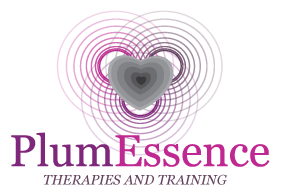This is the 14th in a series of blogs, using answers I used to pass Mental Health qualifications. This blog leads on from the Anxiety series and helps people to have an initial understanding of phobias.
The next series of blogs will give some understanding of the effects of phobias and how to treat, and mange, them.
As with many mental health subjects, they can all be massive topics with reams of books written on them. I will aim to break phobias down into 4 easily read blogs, describing what they are, the effects they have on people and how they can be treated and managed.
I strongly believe there is no one-size-fits all approach to managing any kind of mental health condition, the main reasons why I’m not a massive advocate of medication. I prefer to consider natural, healthy ways to recognise and manage any kind of mental ill health, tailoring each treatment and therapy to suit each individual.
What is a ‘phobia’?
A phobia is considered to be an irrational fear of something, someone, an object, activity or situation, which usually leads to the person avoiding those things.
Common examples can be a phobia of spiders or a fear or heights and flying.
The main groups of phobias:
Phobias can be categorised into 2 main groups: Specific phobias and Complex phobias.
Specific phobias are related to one specific thing, such as the fear of spiders, dentists, flying or of heights, and often develop in childhood or adolescence. Sometimes the intensity of the phobia can reduce as the person ages.
Complex phobias can be more disabling to a person’s quality of life and tend to develop in later adolescence or adulthood, probably when people have to encounter the situations for the first time.
Complex phobias are then sub-categorised into social phobias and agoraphobia.
Some examples of specific and social phobias are:
Specific phobias
Fear of:
– animals such as dogs, spiders, insects and birds
– natural elements such as water, heights, the dark, thunder & lightening and cleanliness
– situational such as dentists, flying, circus clowns, having injections/needles
– body items and functions such as blood loss and sickness
Feelings and behaviours of anxiety tend to arise when these situations present themselves.
Social phobias
Social phobias can include:
– Giving presentations and talks or public speaking
– ‘stage fright’ for performers
– Attending interviews
– Meeting people at networking events or social gatherings such as parties and weddings
– The dislike of eating in front of other people
Heightened feelings and behaviours relating to anxiety tend to arise when these situations arise.
Possible causes of phobia.
Causes of phobias can vary, and can include:
– Learned behaviour from parents, peers and guardians. If a parent has a fear of water/swimming or of spiders for instance, then a child will learn that behaviour.
– Traumatic experiences over the occurrences faced with one of the phobias. For instance the fear of dogs or spiders after having being bitten or attacked by them, causing quite a traumatic outcome. People could also have a fear of being trapped if it happened to them as a child and the memory triggers a negative response. If a performer was heckled or booed off-stage for instance, it could also reduce their self-esteem, confidence and belief about future performances.
The causes of each phobia can vary, and they tend to be closely linked to life experiences, upbringing and learned behaviour.
Phobias are about intense fear which produce physical and psychological feelings.
Tracey of PlumEssence Therapies and Training is a qualified stress management consultant, mental health first aider, clinical hypnotherapist and body work therapist focusing on helping reduce and alleviate concerns connected to both physical and emotional wellbeing. Tracey is also a teacher and trainer, delivering workshops and accredited mental health courses.
Tracey is available for a no-obligation chat to see how we could work together on 01889 808388 or tracey@plumessencetherapies.co.uk
